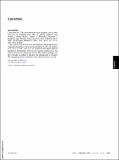The environmental stress response causes ribosome loss in aneuploid yeast cells
Author(s)
Terhorst, Allegra; Sandikci, Arzu; Keller, Abigail; Whittaker, Charles A; Dunham, Maitreya J; Amon, Angelika; ... Show more Show less
DownloadPublished version (1.423Mb)
Publisher Policy
Publisher Policy
Article is made available in accordance with the publisher's policy and may be subject to US copyright law. Please refer to the publisher's site for terms of use.
Terms of use
Metadata
Show full item recordAbstract
© 2020 National Academy of Sciences. All rights reserved. Aneuploidy, a condition characterized by whole chromosome gains and losses, is often associated with significant cellular stress and decreased fitness. However, how cells respond to the aneuploid state has remained controversial. In aneuploid budding yeast, two opposing gene-expression patterns have been reported: the “environmental stress response” (ESR) and the “common aneuploidy gene-expression” (CAGE) signature, in which many ESR genes are oppositely regulated. Here, we investigate this controversy. We show that the CAGE signature is not an aneuploidy-specific gene-expression signature but the result of normalizing the gene-expression profile of actively proliferating aneuploid cells to that of euploid cells grown into stationary phase. Because growth into stationary phase is among the strongest inducers of the ESR, the ESR in aneuploid cells was masked when stationary phase euploid cells were used for normalization in transcriptomic studies. When exponentially growing euploid cells are used in gene-expression comparisons with aneuploid cells, the CAGE signature is no longer evident in aneuploid cells. Instead, aneuploid cells exhibit the ESR. We further show that the ESR causes selective ribosome loss in aneuploid cells, providing an explanation for the decreased cellular density of aneuploid cells. We conclude that aneuploid budding yeast cells mount the ESR, rather than the CAGE signature, in response to aneuploidy-induced cellular stresses, resulting in selective ribosome loss. We propose that the ESR serves two purposes in aneuploid cells: protecting cells from aneuploidy-induced cellular stresses and preventing excessive cellular enlargement during slowed cell cycles by down-regulating translation capacity.
Date issued
2020Department
Koch Institute for Integrative Cancer Research at MITJournal
Proceedings of the National Academy of Sciences of the United States of America
Publisher
Proceedings of the National Academy of Sciences